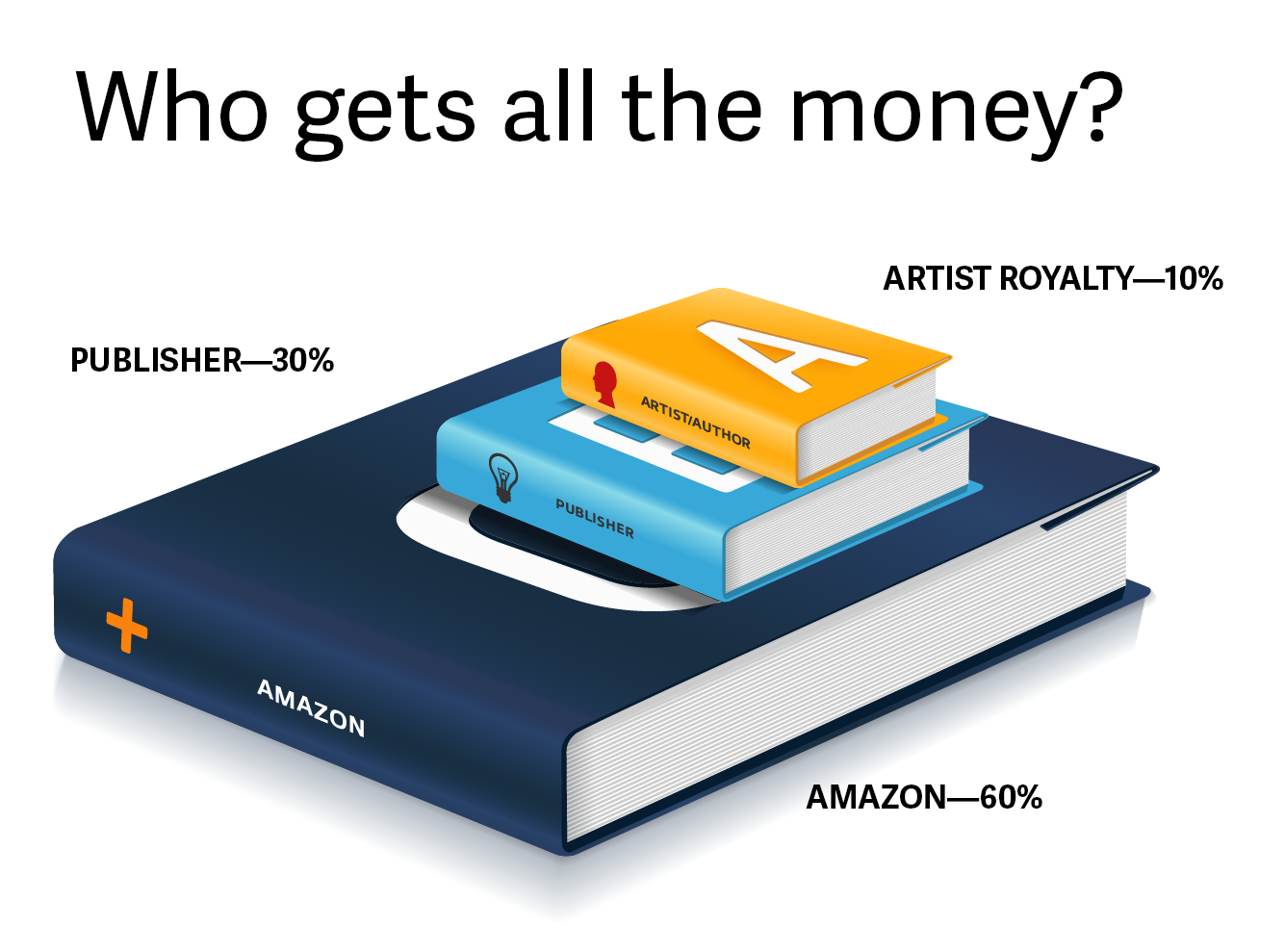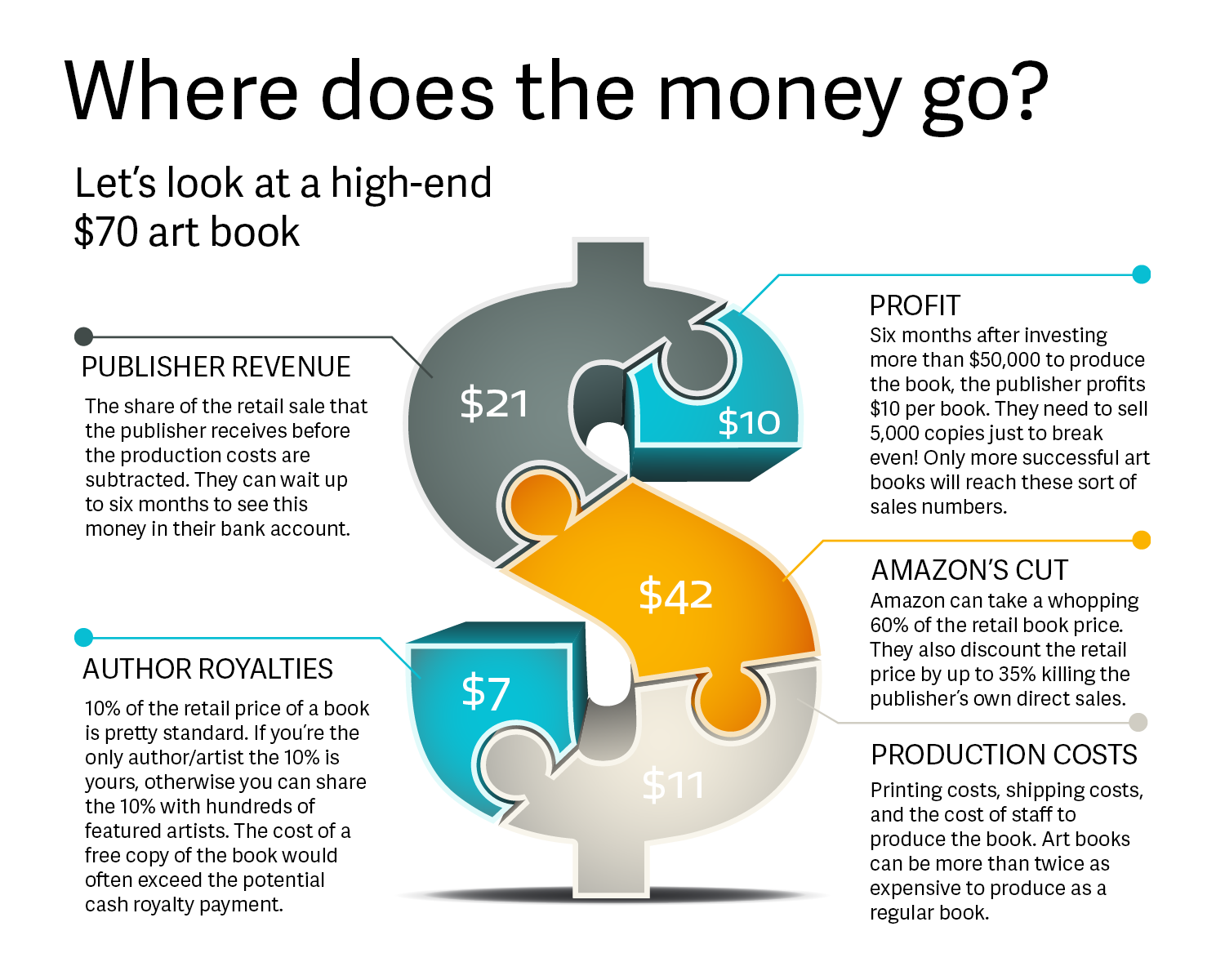Book Publishing: A Financial Analysis.
Leonard Teo and Daniel Wade
A friend was recently approached by a book publisher to use one of his artworks in a book. Like many artists, he was offended that there was no monetary compensation.
Granted, each request is different and we have to evaluate each one independently. Generally, if you’re being asked to do new work (i.e. it’s a commission to do a new piece), yes you should get paid. But if you’ve got a personal piece that’s say, on ArtStation and someone contacts you to use it in a book or a magazine, you’ve got to evaluate it a bit differently.
Daniel and I have over 35 years of combined experience in this industry. We constantly meet artists who are unaware about the business of publishing. There’s a misconception that getting published in a book, magazine, or publishing your own book means big bucks. Both of us were heavily involved in Ballistic Publishing (Leo was a Founder and Daniel headed the business for 8 years), we’d like to share our insights into the world of art book publishing, and how it works best for artists.
The book publishing industry is not what it used to be. If you are in the business of publishing, it is a game of numbers and margins are razor-thin—if there are any at all. The vast majority of books do not make money. Publishers rely on having a large catalog and a few titles that are hits.
Here is how the business of publishing works:
1. An author works with a publisher.
2. A publisher works with a distributor.
3. A distributor works with retail outlets.

A publisher has authors who write books. The publisher works with the author, designs the pages of the book, sends it to press, and markets the book to customers via the press and social media. A large art book project like EXPOSE cost over $100,000 to produce. You then have to ship the book and store it in a warehouse. That's why it’s better for publishers to scale up and produce multiple books, as they then get economies of scale.

When looking at the breakdown of costs to publish a book, neither the publisher nor the artist/author is getting rich. On a single artist/author book the publisher receives a slightly higher return than the artist, but to get that extra money they invest tens of thousands of dollars upfront, and in some cases pay artists an advance on royalties.
For a book like EXPOSE which featured up to 300 hundred artists, the royalty per artist if 5,000 copies were sold would be just over $116.
$7 / 300 artists = $0.023 per book sold
5,000 books x $0.023 = $116
5,000 book sales might take 3 years to accumulate so if royalties were paid quarterly, then the $25 bank transfer fee would exceed the royalties ($9.72 per quarter). The Ballistic solution was to send a standard edition of the book on launch with free worldwide shipping to the artist valued at just over $100. We also offered an option for artists to purchase a Limited Edition at a 50% discount with free worldwide shipping.
If the publisher isn’t making huge profits, then why are they doing it? Like artists, the people working in the publishing industry do it out of passion for their craft, and the enjoyment of working with talented, creative people. All industries in the last two decades have had to find their place in a worldwide market where companies in developing countries can produce work more cheaply.
To compete in this worldwide market, artists need to promote themselves like never before. You can promote your work on Facebook or Twitter, but how many potential employers are looking for artists in their Facebook feed? You can try LinkedIn, but it’s not showing anyone’s work well enough to get a job. You can choose a platform like ArtStation where you get the benefit of being a part of a community of artists who are all pushing each other to develop, and attracting employers and fans. You are probably more likely to get a job by featuring on the ArtStation Trending or Picks wall than being featured in a book, but having both is likely to elevate you to another level. Having your work selected by an advisory board of well-known artists is something to put on your resume, and it is a validation of the quality of your work. One of the other benefits that we’ve heard hundreds of times is that a book finally allows your parents to understand what you do all day in front of the computer.
To answer the question, should artists get paid to get published in a book? Absolutely yes, we believe that there should be payment. But that payment doesn’t have to be cash. It has to be valuable for the artist to be published otherwise there’s no point in the transaction at all.
As long as you know that there's barely any money in publishing (unless it’s a mainstream title), you can make a choice: you can decide to get upset and not let your artwork be used under any circumstances, or you can try to get as much value from it by letting them use your artwork, making sure you’re credited and using it as a showcase piece in your portfolio.
You can also negotiate other benefits from a publisher. If a publisher has other books that are interesting, ask for them to send them to you in exchange. It’s much simpler for a publisher to send you their unsold inventory than cash. We’ve helped thousands of artists who understand the value of being published and just go for it. Hundreds of these artists have secured Hollywood movie jobs, and AAA game jobs from the exposure.
We’re not advocating that you give your work away for free. There has to be a payoff for your time. Every opportunity is different. There are some basic economic realities of the publishing business, and knowing them you can secure a good deal even if it’s not straight up cash.
--
Leonard Teo is the Founder of ArtStation, the network for the media & entertainment visual arts industry. His company Ballistiq, provides web & mobile software development services for media & entertainment companies such as Autodesk, NVIDIA, Gnomon School, FZD School and more. He also founded CGSociety.org and Ballistic Publishing, and worked for Softimage and Autodesk.
Daniel Wade is Product Manager at ArtStation.com, and a digital arts evangelist with project management, production, and licensing experience. He led the publishing team at Ballistic Publishing for 8 years, developing the EXPOSÉ, d’artiste and Art of the Games series, and spent nine years as Editor of Design Graphics Magazine.



